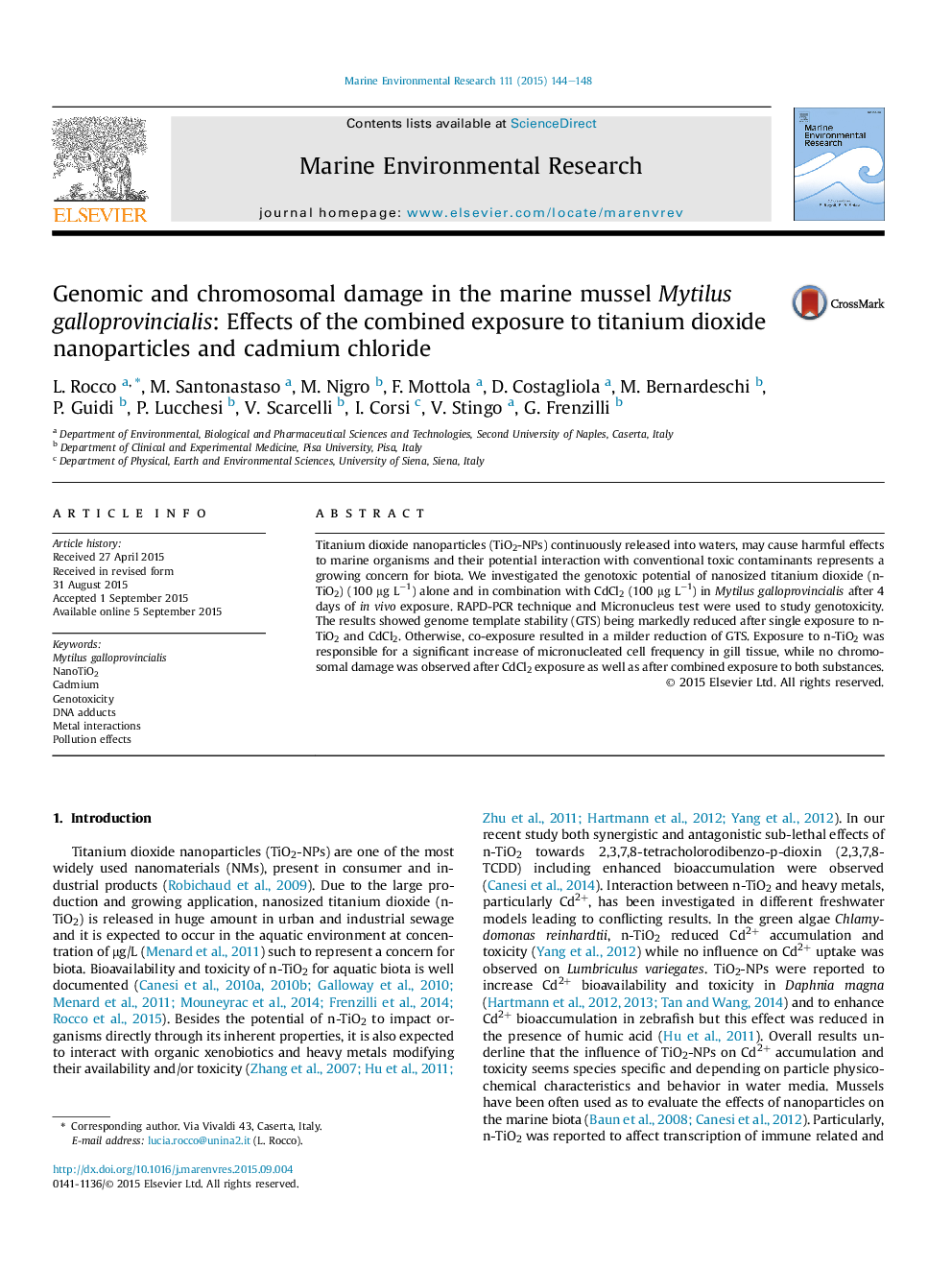| Article ID | Journal | Published Year | Pages | File Type |
|---|---|---|---|---|
| 4550680 | Marine Environmental Research | 2015 | 5 Pages |
•TiO2-NPs can interact with marine contaminants modifying their toxicity.•Single exposure to n-TiO2 and CdCl2 reduces in vivo DNA stability in mussels.•n-TiO2 increases in vivo micronucleated cell frequency in Mytilus galloprovincialis.•No synergic effect is observed after co-exposure to n-TiO2/CdCl2.
Titanium dioxide nanoparticles (TiO2-NPs) continuously released into waters, may cause harmful effects to marine organisms and their potential interaction with conventional toxic contaminants represents a growing concern for biota. We investigated the genotoxic potential of nanosized titanium dioxide (n-TiO2) (100 μg L−1) alone and in combination with CdCl2 (100 μg L−1) in Mytilus galloprovincialis after 4 days of in vivo exposure. RAPD-PCR technique and Micronucleus test were used to study genotoxicity. The results showed genome template stability (GTS) being markedly reduced after single exposure to n-TiO2 and CdCl2. Otherwise, co-exposure resulted in a milder reduction of GTS. Exposure to n-TiO2 was responsible for a significant increase of micronucleated cell frequency in gill tissue, while no chromosomal damage was observed after CdCl2 exposure as well as after combined exposure to both substances.
